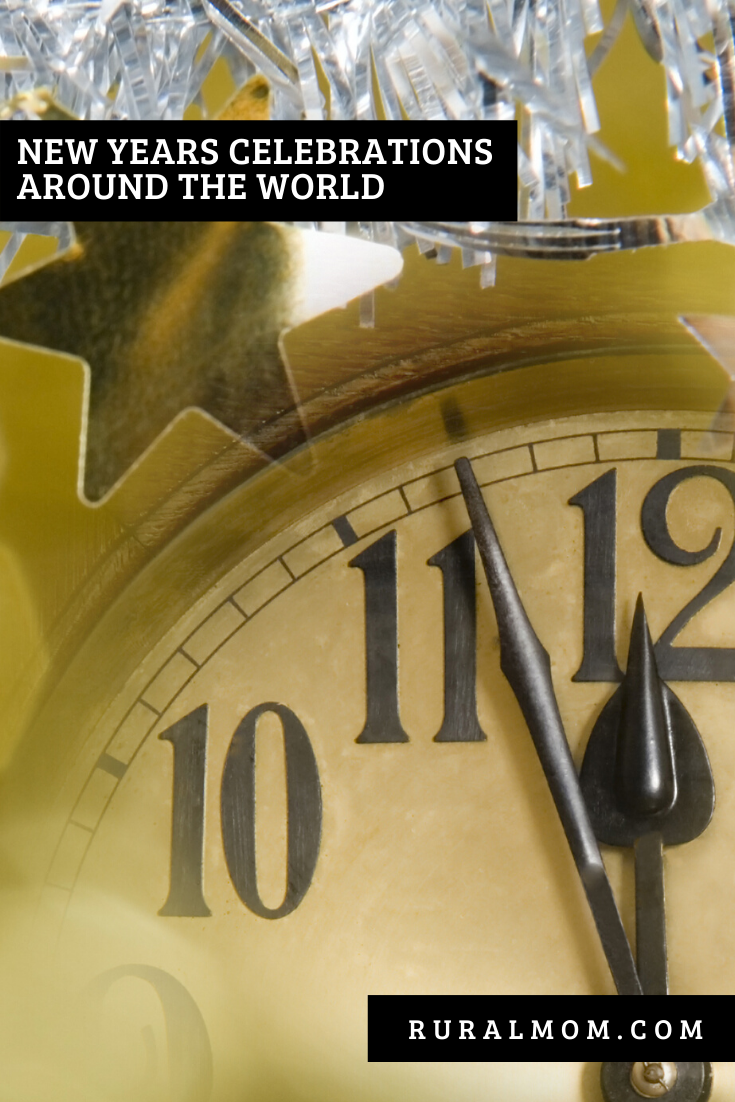January 1st has been largely seen as the start of the New Years celebrations since the time the solar calendar was introduced by Caesar. In ancient Celtic tradition, however, the start of the New Year was viewed as October 31st.
The Chinese New Year, which follows the lunar calendar is a moving date which can occur anytime between late January and mid February.
Learning the history of New Years celebrations and the reasons other cultures celebrate the New Year, whenever it falls, can enhance your personal experience.
Origins of New Years Traditions
New Year festival is among the oldest and most universally observed of all festivals falling through out the calendar year.
The Roman republican calendar observed December 21st, the winter solstice as the beginning of the year until the time of Julius Caesar (100-44BC.) It was Caesar who introduced the Julian Calendar format, still in use today. Based on three hundred and sixty-five days in a year, with three hundred and sixty-six in a leap year. In doing so, Caesar moved the New Year festival to January 1st.
In England, Anglo Saxons were celebrating the New Year on December 25th until William the Conqueror moved the festival to January 1st. However, this in turn was once again changed to align with Catholic Europe and the date subsequently changed March 25th.
In 1582, during the reign of Pope Gregory XIII, the Gregorian calendar was adopted. With it, again the festival was moved back to January 1st. Although named after the Pope, the calendar was actually invented by the Neapolitan astronomer Aloysius Lilius and perfected by Clavius.
Once again it was almost two hundred years before Britain followed suit, with Scotland moving the festival back to January 1st in 1660. England made the change in 1752.
Samhain, the Celtic New Year
Sometimes called the Witches’ New Year, Samhain, meaning “land of the dead” “day of the dead” “summerland” or “the end of summer” depending on context, is the date most people think of as Halloween. In fact, according the Celtic calendar, or wheel of the year, sunset on October 31st marked the beginning of Samhain and the start of Celtic New Year.
Samhain is typically celebrated for three days, with November 1st being the climax of the celebrating. According to the Celtic calendar, there are 4 “quarter days” marked to celebrate the passing of the year. November 1st is the first. Then followed by February 2nd, when the returning of longer days and light is celebrated. May 1st, is when the returning fertility of the Earth is celebrated and August 1st when the harvest is celebrated.
November 1st, and the Celtic New Year was a time to celebrate the coming winter, since in Celtic tradition, from darkness comes light. So from winter, comes spring and the return of harvests, light and warmth.
To celebrate Samhain, feasting was carried out for three days, beginning at sundown on the 31st. The veil between the worlds was thought to be thin on this night, meaning that the spirits of dead loved ones could return. Food was often left out for these spirits, and many revelers went masked, so walk among the dead.
Jewish New Year
The Jewish calendar, a complex combination of solar and lunar cycles begins with the celebration of Rosh Hashanah or Jewish New Year. This starts on the first day of Tishri falling between September 6th and October 5th.
The first rays from the sun peek over the horizon and greet the dawn of the New Year at different times of year, depending upon the culture. Rosh Hashanah is a two-day celebration.
Rosh Hashanah customs include attending synagogue services, enjoying festive meals, and following the teachings of the Hebrew Bible to “raise a noise” on Yom Teruah.
The Chinese New Year
For the party animal, the Chinese New Year celebrations last for a month falling in late January or early February. The celebrations are preceded by the exorcism of ghosts followed by theatrical performances, lion dancing and elaborate firework displays.
The Chinese calendar is in part based upon the lunar calendar, making the start of the Chinese New Year shift with each year. The New Year itself will always fall on the first day, of the first month of the Chinese Calendar, however as the lunar calendar is not as accurate as a solar calendar, the start of this date will change from year to year. This makes the start of the Chinese New Year fall anywhere from the end of January to mid February.
Also known as the Spring Festival, the celebrations for the Chinese New Year typically last from the first day of the first month, until the fifteen day of the same month. Customs and celebrations will vary widely from region to region. Many customs include thoroughly cleaning the home and mending clothing and bedding to remove an ill luck from the past and ensure a bright start for the New Year.
Much like the Celtic New Year, in many regions of China, the Chinese New Year was seen as a time to settle debts. It’s also time to reconcile differences and wish peace and prosperity for all in the coming year.
The Festival of Truit
Truit, Thailand’s New Year festival falls in March or April. A hotch-potch of the country’s culture, brings with it the exorcism of ghosts by Buddhist monks who are given gifts of food in return.
It is also a time when the country’s Hindu’s make oblations to their Gods. People meeting in the street, playfully throw water over one another in greeting. Gambling, a pastime normally frowned upon, is permitted during the duration of the three-day festival.
January 1st The Current New Year
The New Year as it is known today, is actually a fairly recent celebration in history. The calendar as it is followed today was actually fairly slow to be adapted in many countries. While the calendar was finally firmed up and implemented in 1582, many countries did not formerly adopt it, or the New Year’s date of January 1st until 1752.
Many New Year traditions have been carried from other cultures, regions and celebrations that have occurred throughout the world to be filtered down to the New Year’s traditions and celebrations celebrated today. The New Year’s resolution could be seen as the modern equivalent of planning for the coming winter and the following spring. Celebrating with fireworks has long been a Chinese New Year tradition, which is also part of the January 1st New Year.
When celebrating the New Year this January, take some time to reflect on this ancient tradition of celebrating the coming months. Take time to reaffirm goals and lifestyle commitments. By taking into account the past, we create a more fruitful future.
Sunrise on January 1st will, as usual, herald the dawn of a new day and with it the start of the New Year. The New Year’s tradition of “out with the old, in with the new” is celebrated on many different dates and in many different ways around the globe.




